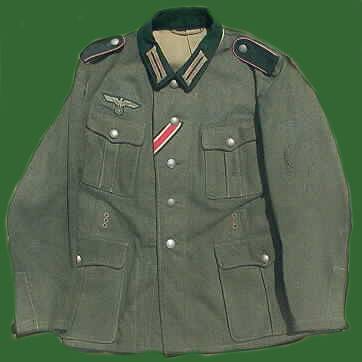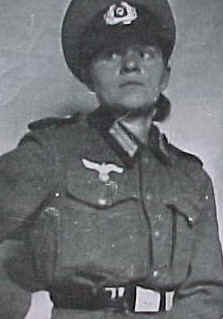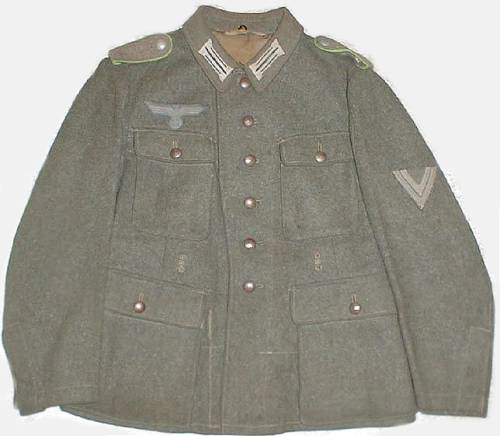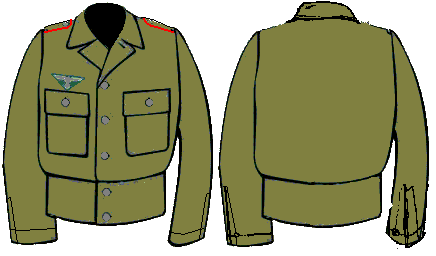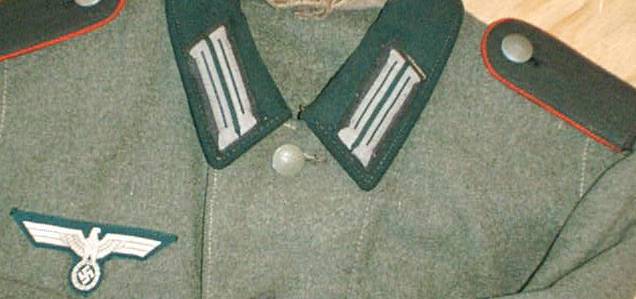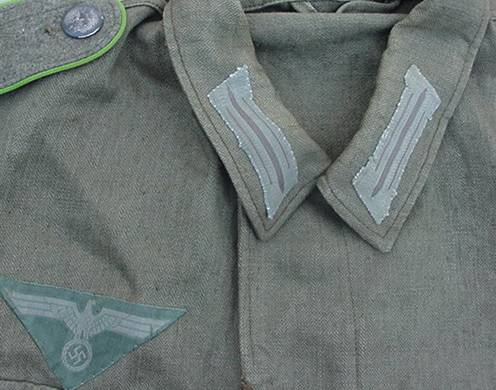| Feldbluse In 1936, a new uniform garment was introduced into the Wehrmacht for wear in the field. This tunic (properly called a Feldbluse, or "field blouse", or also the Heeres Dienstanzug Modell 1936 (Army Service Uniform Model 1936) is usually referred to by collectors simply as the "M36." The garment evolved from earlier garments developed in the early 1930s, and was actually in use by 1935; earlier field blouses (actually introduced in April 1933) had a field grey collar. The final prewar changes were made to the field blouse in 1936. This final prewar tunic was made from high quality wool with a small mix of rayon, with a full interior lining to reduce wear to the wool body. The blouse had the following features: Front Closure: 5 button front |
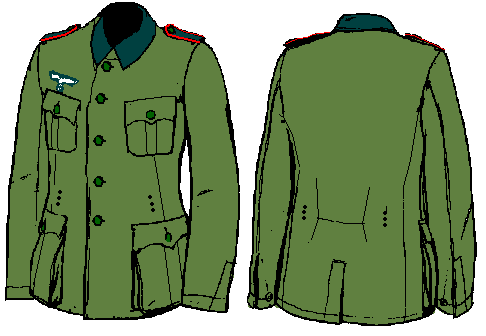 |
||||
Interior: Lining has breast pockets, as well as a pocket on the left lower skirt, in which a field dressing was carried. Additionally, 12 holes in the tunic were provided, in sets of three; these were for the additional of metal belt hooks, which were themselves attached to cloth suspenders fitted inside the jacket. This system was designed to support the weight of the field equipment, which was intended to be worn completely on the belt with no external suspenders.
Other: Shoulder straps were designed to be removable, fitted to the uniform by the button and a cloth loop near the shoulder. |
|||||
| Wartime Changes While many changes to the field blouse were made during the war, the basic designation of "Feldbluse" did not; the Germans did not draw a distinction between the different types, and never referred to the different tunics by the terms that collectors have now adopted - M40, M41, M42, and M43. 1940 The first changes to the design of the Feldbluse came in 1940, when the dark green collar was abandoned in favour of a field grey collar matching the rest of the uniform. Minor variations in wool quality and colour can be seen in this period as well. At some point before 1942, an additional button was added to the tunic front, making a six-button front closure. |
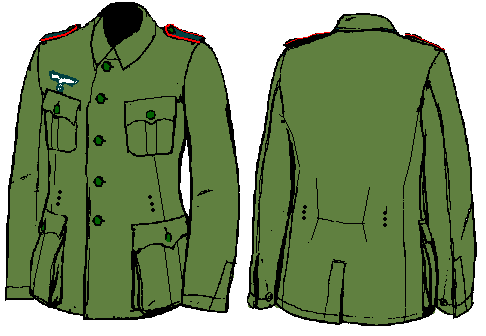 |
||||
1942 In 1942, as an economy measure, the box pleats on the pockets were removed. The pocket flaps retained the scallop, however. |
|||||
|
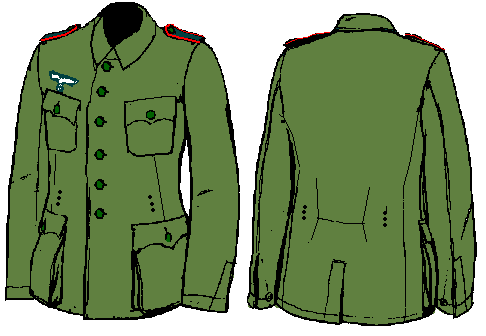 |
||||
| 1943 In 1943, new production field blouses had the pocket flaps altered so as to be cut straight across. The interior tunic lining and internal cartridge suspenders were also deleted; by this time external equipment suspenders had long been in use. This late war style of tunic, often referred to as an "M43", was often seen worn open at the collar, with well defined lapels. By this point, the tunic had also been lengthened slightly in comparison to earlier models of the Field Blouse. All the while, material used in the construction of uniforms in Germany had downgraded; by the time the changes collectors refer to as "M43" were made, uniform cloth was made up of hybrids containing less than 50% wool. Uniform colours varied widely, from the original green-grey known as "field grey" to slate grey and even shades of brown. Buttons came to be painted grey rather than field grey as well. |
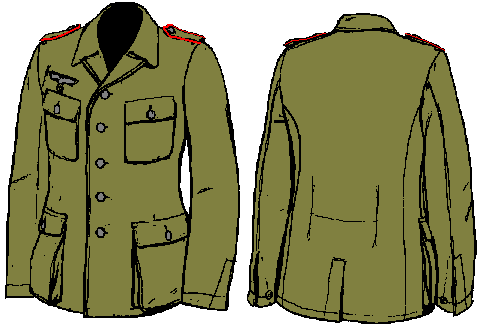 |
||||
|
|||||
| Felduniform 44 In September, 1944, the new Field Uniform 44 was introduced. The Field Blouse for this new uniform was remarkably similar to the US "Ike" jacket, itself inspired by British Battle Dress. The new uniform, made from shoddy recycled wool, had two patch pockets on the breast, and a broad 10 cm waistband in place of a tunic skirt. The pockets, lapels and sleeve cuffs remained styled after the latest patterns of Field Blouse.
|
|
||||
